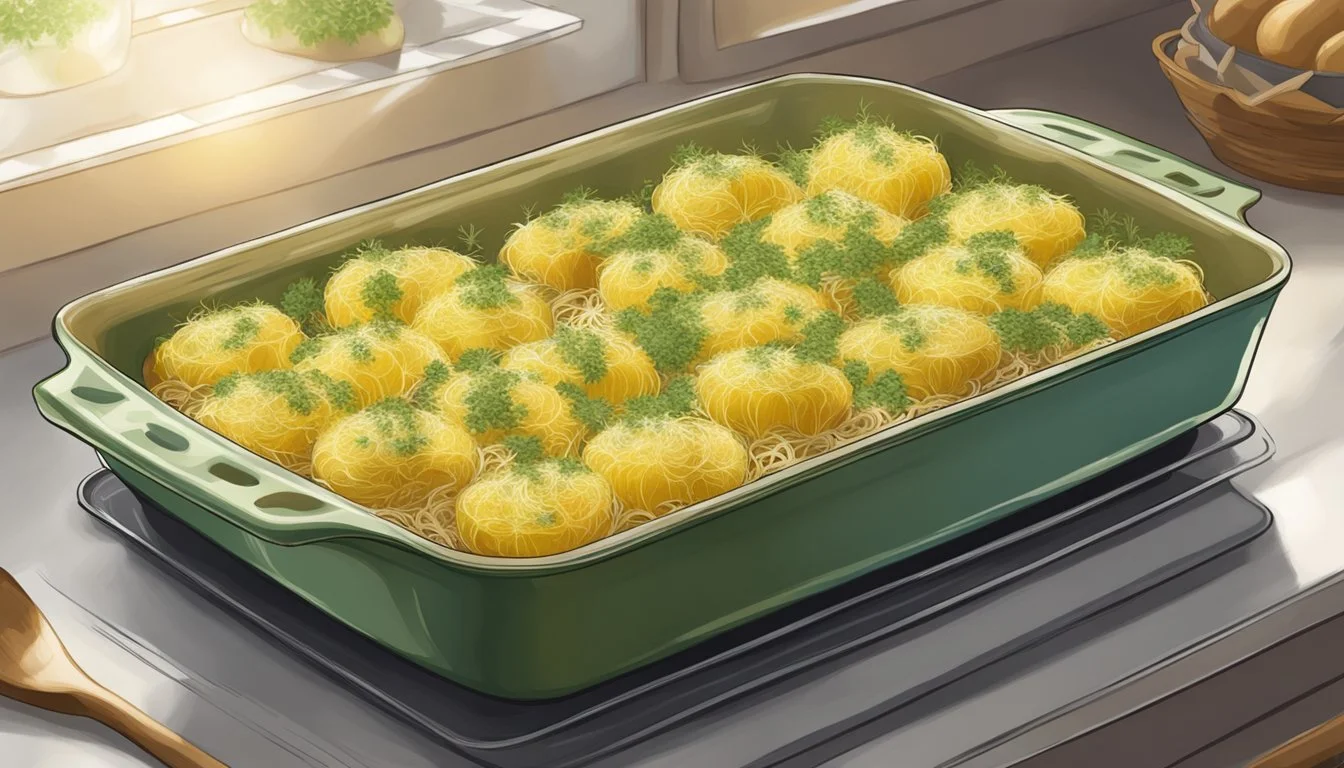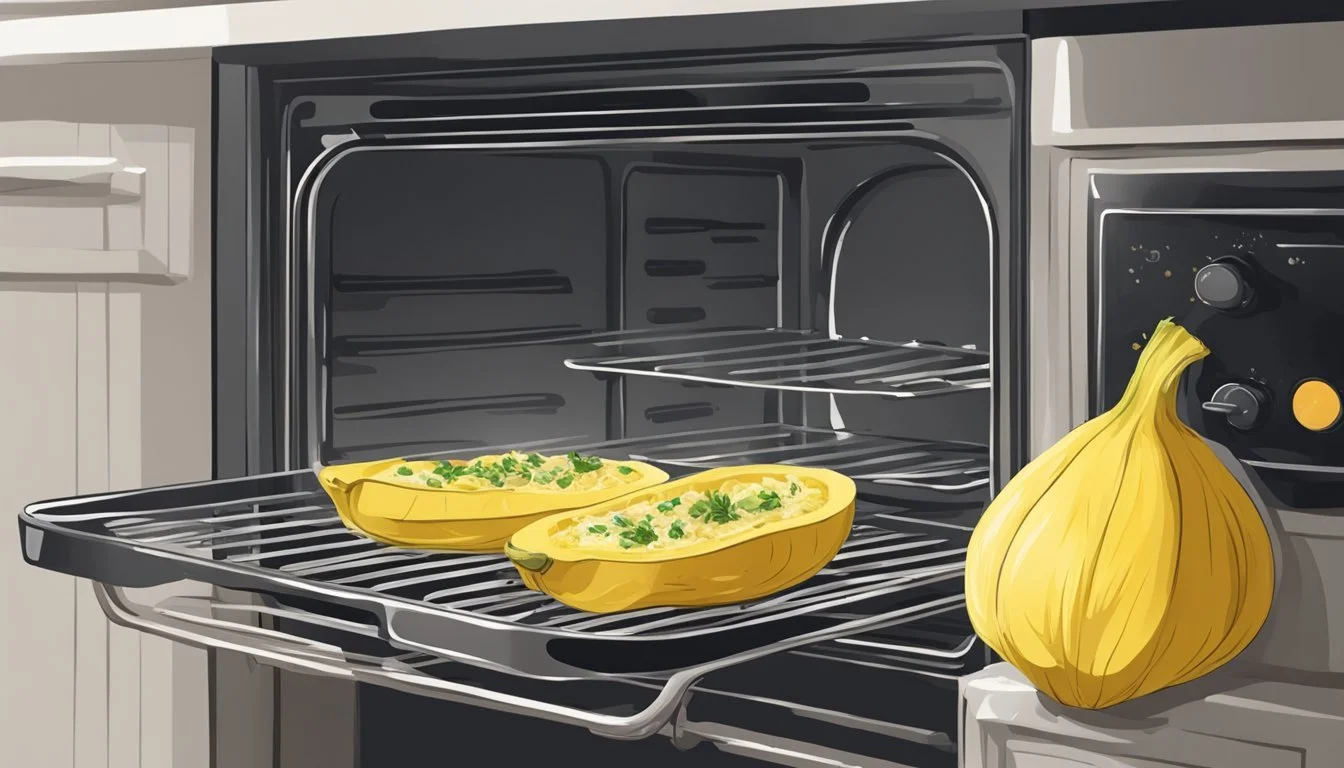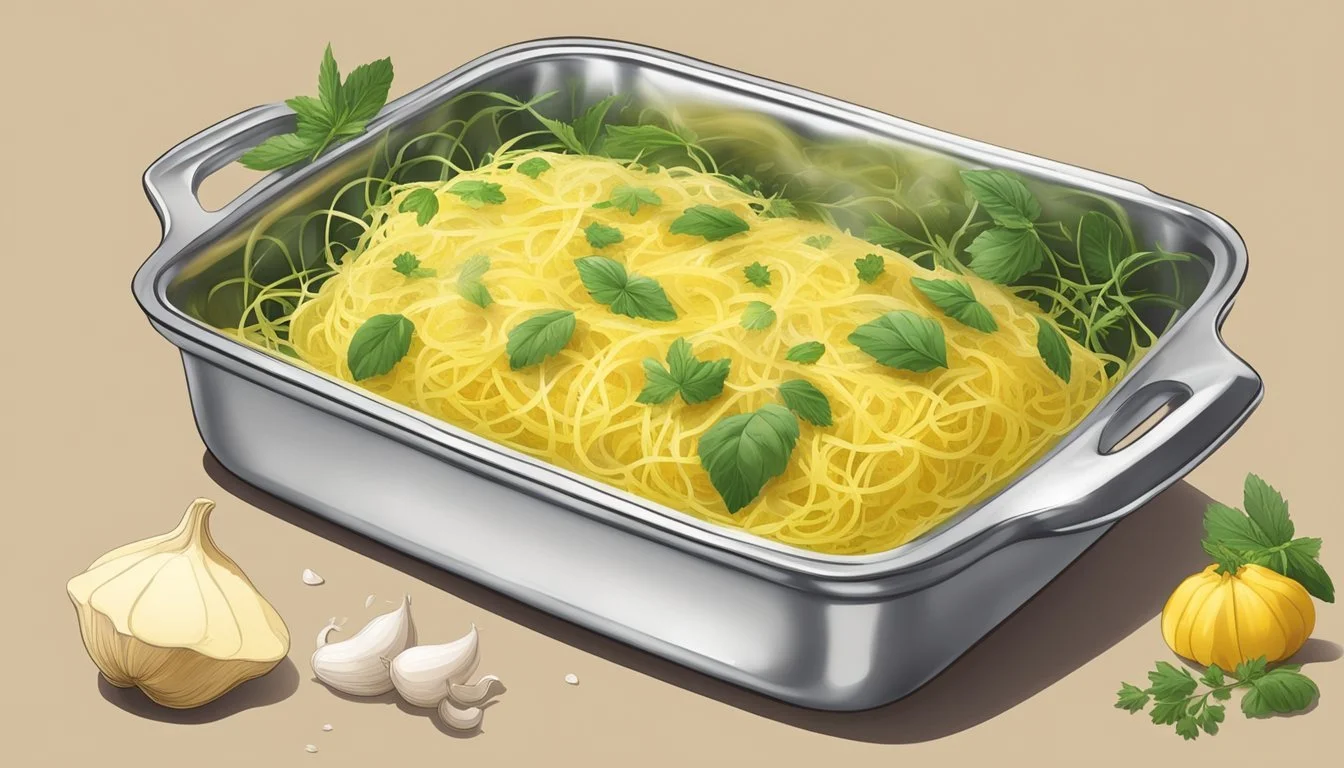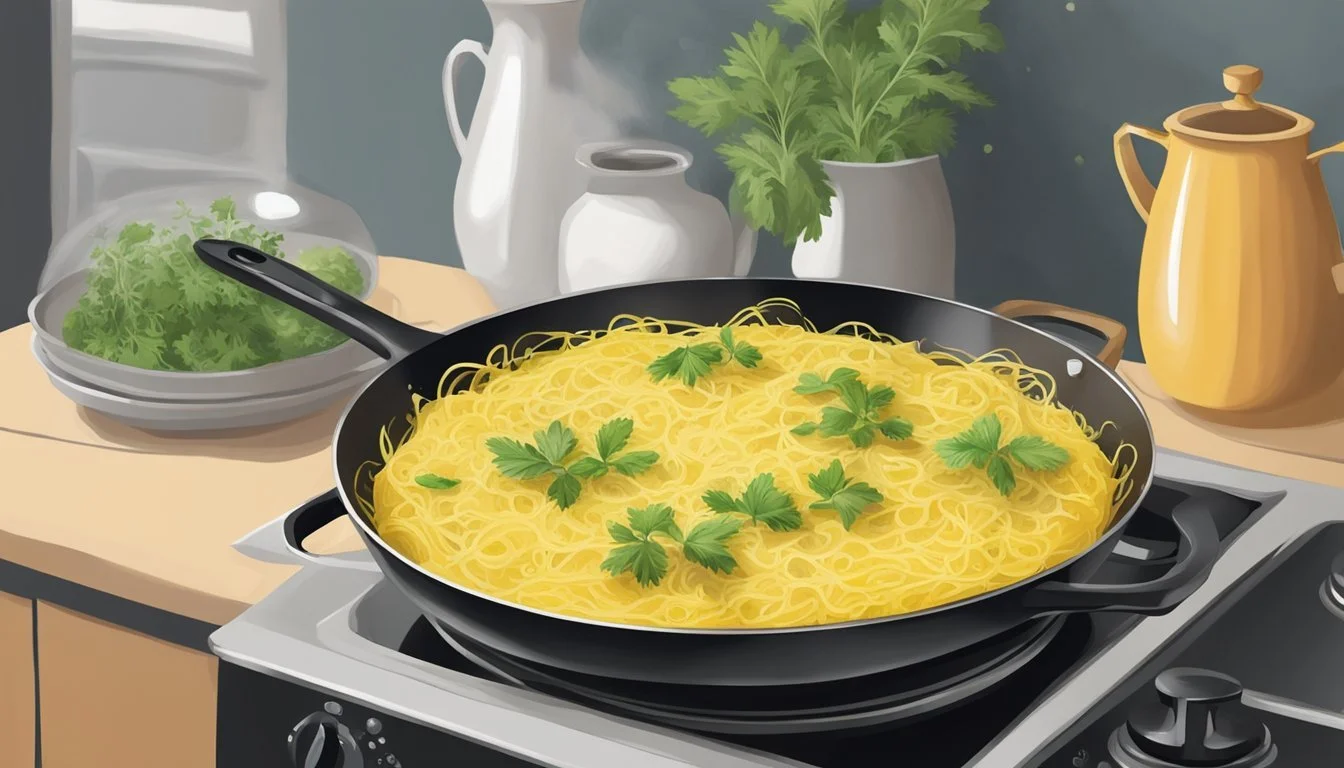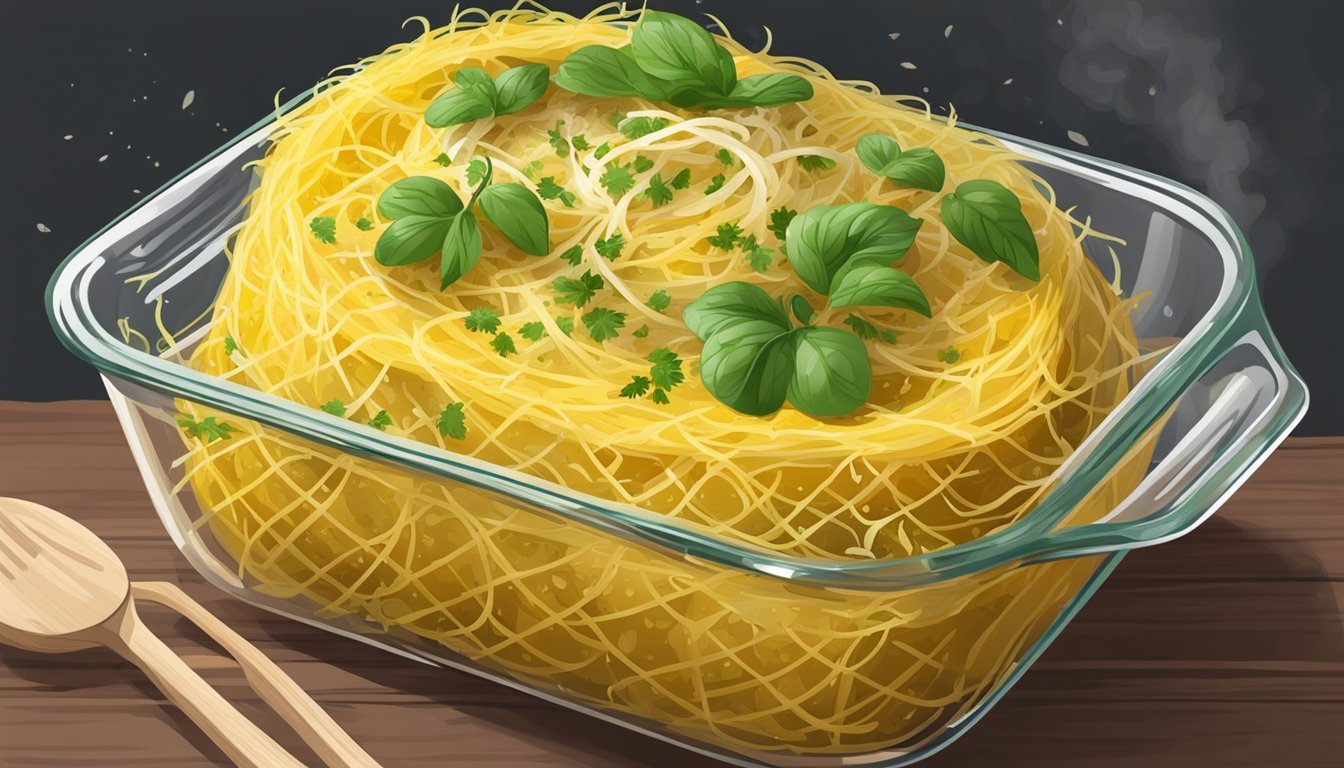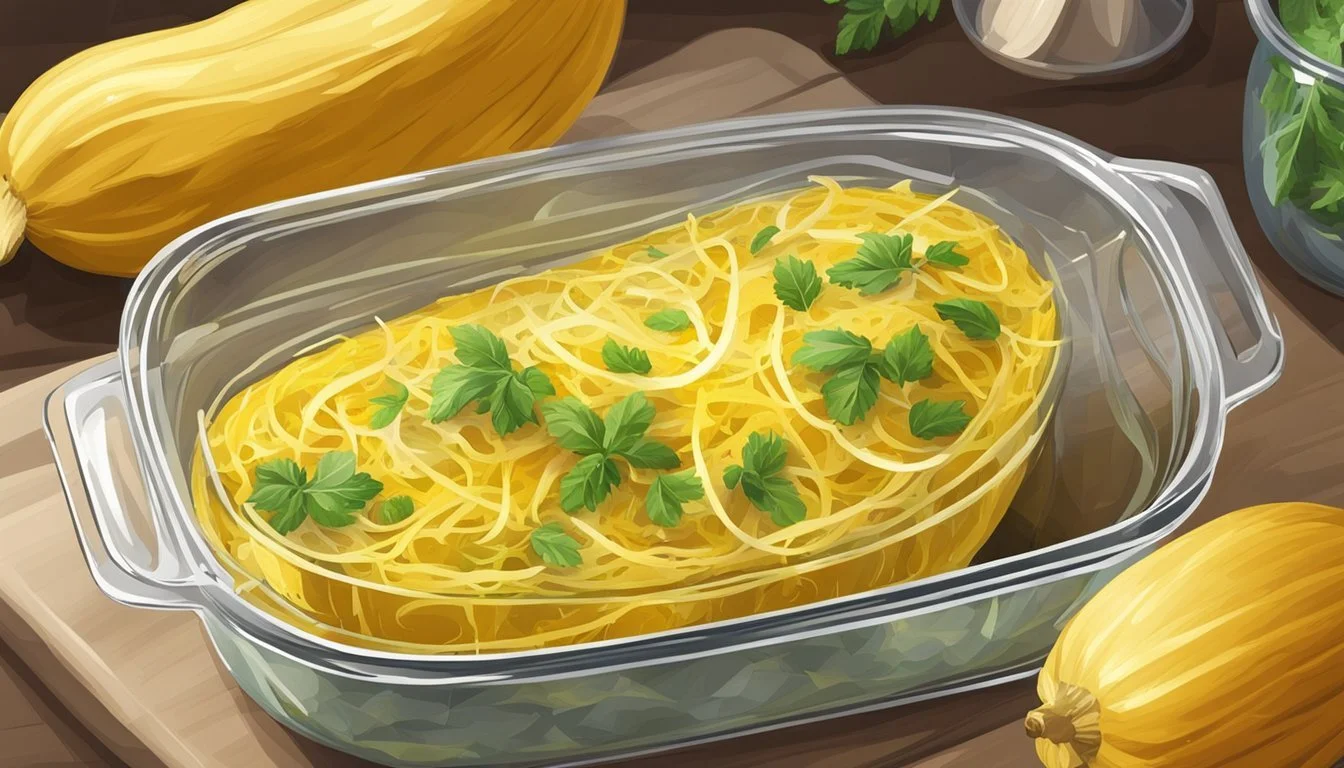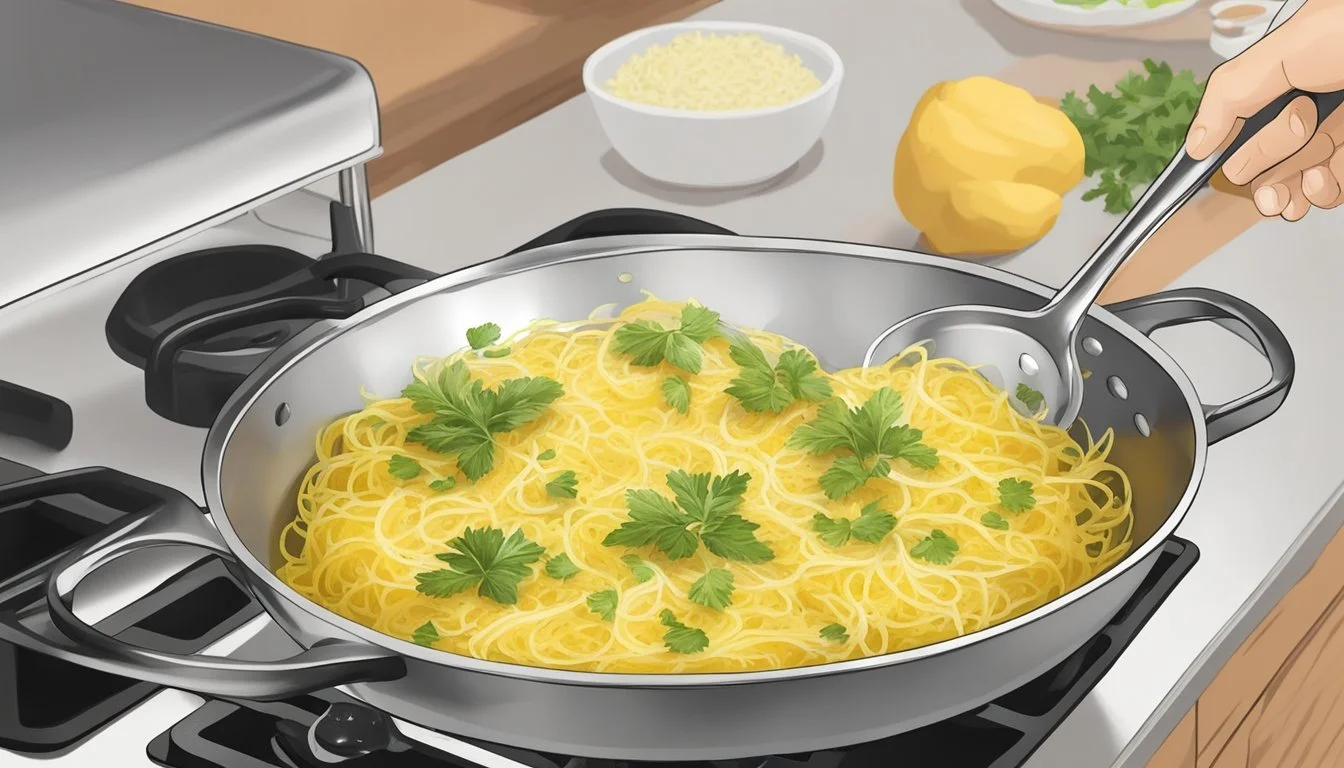Best Way to Reheat Baked Spaghetti Squash with Garlic and Herbs for Optimal Tenderness
Baked spaghetti squash with garlic (What wine goes well with garlic?) and herbs is a healthy, low-carb, and gluten-free alternative to traditional pasta dishes that resonates with those mindful of their nutrient intake. Preserving the integrity of this delicate dish during reheating is crucial to maintaining its enticing texture and robust flavors. It's a common dilemma to keep leftovers tender, as reheated spaghetti squash can easily become mushy or dry, undermining its initial appeal.
Reheating baked spaghetti squash requires a method that distributes heat evenly without sacrificing moisture, ensuring that the original flavors of garlic and herbs are not diminished. While there are various techniques to warm up this versatile vegetable, some stand out in preserving the squash's inherent qualities.
Selecting the right reheating strategy is vital, particularly when considering the delicate balance of preserving the nutrients present in spaghetti squash. Techniques vary in their effectiveness, with some providing a quick solution, while others take a slower approach, gently coaxing the squash back to its optimal serving condition.
Selecting the Right Reheating Method
When reheating baked spaghetti squash with garlic and herbs, preserving its tender texture and rich flavor is key. The chosen method should achieve a balance between warming the dish thoroughly and maintaining its crispy texture.
Oven Methods
- Preheat and Heat: For best results, one should preheat the oven to 350 degrees Fahrenheit before placing the spaghetti squash in an oven-safe dish. This method allows for even heating and helps in keeping the squash's texture intact.
- Duration and Tips: Reheating usually takes about 20-30 minutes. For an additional crispy texture, one can remove the cover during the final minutes.
Microwave Techniques
- Short Intervals: The microwave is efficient for quick reheating. Cut the squash into servings and heat at medium power in 30-second intervals, stirring between each to avoid cold spots.
- Maintaining Moisture: Cover the dish with a microwave-safe lid or wrap to lock in moisture. This prevents drying out and ensures that the squash remains tender.
Skillet Reheating
- Low Heat: Using a skillet on low heat with a bit of olive oil is ideal for single servings. This method adds a slight crisp to the edges while maintaining the interior moisture.
- Continuous Stirring: Stirring often is essential to prevent sticking and to guarantee even reheating. The process should take only a few minutes for the squash to reach the desired temperature.
Preparation Tips Before Reheating
For optimal results, ensuring the baked spaghetti squash with garlic and herbs is properly prepared before reheating is crucial. This sets the foundation for a tender and flavorful dish post-reheating.
Cutting and Portioning
Before reheating spaghetti squash, one should ensure it is cut and portioned effectively. Squash should be:
Cooled: Allow it to reach room temperature if it has just been cooked to make it easier to handle.
Cut: Slice the squash into equal-sized boats or chunks to promote even reheating.
Portioned: If only reheating a portion, separate the desired amount from the rest to maintain the integrity of any remaining squash. Store leftovers in an airtight container and refrigerate.
Using the Right Utensils
Selecting suitable utensils and materials is key for reheating:
Baking Dish: Opt for a glass or ceramic baking dish that allows for uniform heat distribution.
Parchment Paper/Aluminum Foil: Line the dish with parchment paper for easy cleanup or wrap the squash in aluminum foil to preserve moisture.
Rimmed Baking Sheet: Utilize a rimmed baking sheet if opting for a flattened layer of squash, which aids in heat circulation.
Foil: Lightly tent with foil to protect against drying out, especially if the squash was previously seasoned and you want to retain its flavors.
Preparing baked spaghetti squash in this manner ensures it heats through evenly and retains its desired tender texture and robust flavors of garlic and herbs.
Reheating in the Oven
When reheating baked spaghetti squash, the oven is an excellent method to preserve the dish's flavor and texture. The key is to ensure that the squash is exposed to even heat, while also maintaining its moisture, to prevent drying out.
Preheating to the Correct Temperature
It is crucial to preheat the oven to 350 degrees Fahrenheit before reheating the squash. This temperature is sufficient to warm the squash thoroughly without overcooking it.
Note: Always use an oven thermometer to verify the oven has reached the proper temperature for accurate results.
Covering to Retain Moisture
To retain the spaghetti squash's moisture, cover it with aluminum foil or a baking sheet lined with parchment paper. This will ensure that the steam remains within the squash, keeping it tender.
Covering Materials:
Aluminum Foil: Wraps easily around the squash, trapping in moisture.
Parchment Paper: Prevents sticking and helps to lock in flavors and moisture.
Timing for Perfect Texture
The baking time is typically between 20-25 minutes, depending on the size of the squash and the amount being reheated.
Checking Doneness:
At 20 minutes, check the squash. It should be heated through but still tender.
If it's a larger portion, additional time may be needed. Check every 5 minutes to avoid overcooking.
Additional Tips:
If the squash was originally seasoned with garlic, herbs, salt, and perhaps topped with parmesan cheese, it's important to protect these flavors during reheating.
Leftover spaghetti squash will have reduced calories compared to its freshly roasted counterpart, especially if topped with low-fat options like parmesan cheese as opposed to butter or heavier oils.
By following these specific steps, baked spaghetti squash can be effectively reheated in the oven, resulting in a dish that preserves the essence of its initial preparation.
Reheating on the Stovetop
Reheating baked spaghetti squash with garlic and herbs on the stovetop allows for careful control of heat and texture. The goal is to warm the squash thoroughly while maintaining its tender texture.
Skillet Temperature and Time
A skillet should be set to a low to medium heat, which is sufficient to warm the squash without scorching it. One should aim to reheat the spaghetti squash for about 5 to 7 minutes, occasionally stirring to ensure even heating. The skillet's even heat distribution makes it a versatile choice for reheating a variety of dishes.
Adding Moisture with Sauces and Oils
To prevent the spaghetti squash from drying out, adding a small amount of moisture is key. A tablespoon or two of olive oil or a preferred sauce—such as pesto or tomato sauce—can be introduced to the skillet when reheating. This not only adds moisture but also enhances flavor. If using a sauce, allow it to simmer with the squash to impart a more cohesive taste.
Olive oil: Add 1-2 tablespoons.
Sauce: Use 1/4 cup or enough to lightly coat the squash.
Avoiding Overcooking
Constant vigilance is necessary to avoid overcooking the spaghetti squash. Stirring frequently helps to distribute heat and prevents any single piece from becoming too soft. The spaghetti squash should retain some of its firm texture, akin to al dente pasta. It should be checked periodically and removed from heat once it's sufficiently warmed through.
Reheating in the Microwave
When reheating baked spaghetti squash with garlic and herbs in the microwave, the goal is to maintain the tenderness and flavor of the leftovers without adding extra calories or compromising on texture.
Protecting Texture with Damp Paper Towel
To prevent the spaghetti squash from becoming too dry or losing its texture, one should cover the dish with a damp paper towel before microwaving. This technique helps to:
Retain Moisture: The damp paper towel provides a moist environment that keeps the squash tender.
Even Reheating: It also promotes more even reheating, reducing the risk of some parts becoming too hot while others remain cool.
Correct Power Settings
Using the right power settings in the microwave is crucial to avoid overcooking the spaghetti squash, which can lead to a significant loss of flavor and a mushy texture. Follow these guidelines:
Medium Power: Reheat the squash on medium power, typically 50% of the microwave's full capacity, to ensure gentle warming.
Short Intervals: Heat in short intervals of 30 seconds, checking the tenderness after each, to avoid overheating the delicate strands of squash and buttery garlic-herb mixture.
Enhancing Flavor and Nutrition
When reheating baked spaghetti squash with garlic and herbs, one can simultaneously bolster both the dish's flavor and nutritional profile. The right combination of toppings and seasonings not only enriches the taste but also contributes valuable nutrients, such as fiber and protein, without adding excessive calories.
Healthy Toppings and Add-ons
Cheeses: Parmesan cheese is a fantastic option for enhancing flavor while adding a modest boost of protein and calcium. Its strong flavor allows for using less, which helps keep the calorie count in check.
Nuts and Seeds: A sprinkle of toasted pine nuts or some flax seeds can add textural contrast and important omega-3 fatty acids.
Vegetables: For additional fiber and vitamins, topping the squash with sautéed spinach or cherry tomatoes enriches the dish.
Lean Proteins: Incorporating grilled chicken or shrimp can transform the meal into a more satiating dish by significantly increasing its protein content.
Utilizing Fresh Herbs and Spices
Fresh Herbs:
Parsley: It lends a fresh, clean taste and supplies a wealth of vitamins.
Basil: This herb adds a peppery sweetness, complementing the natural flavor of the squash.
Thyme: With its earthy and lemony undertones, thyme can contribute complexity to the dish.
Spices:
Black Pepper and Kosher Salt: A compelling flavor duo, these fundamental spices should be used to taste, enhancing the overall savoriness.
Garlic Powder: For an unobtrusive garlic flavor throughout, a light dusting of garlic powder works wonders.
Red Pepper Flakes: A pinch of crushed red pepper flakes can enliven the squash with a mild heat.
By thoughtfully incorporating these toppings and seasonings, one can heighten the flavor and nutritional value of baked spaghetti squash, achieving a dish that is as healthful as it is delicious.
Proper Storage Techniques
Proper storage is essential for maintaining the quality and safety of your leftover baked spaghetti squash with garlic and herbs. Whether you're planning to enjoy it in the near future or save it for the long haul, the right techniques can make a significant difference.
Refrigerating for Short-Term Storage
For short-term storage, one should refrigerate their leftover spaghetti squash. The key here is to seal the squash in an airtight container to retain its moisture and flavor. It's advisable to consume refrigerated leftovers within 3-5 days to ensure quality and taste.
Steps:
Allow the squash to cool to room temperature.
Transfer the squash to an airtight container.
Place the container in the fridge.
Freezing for Long-Term Use
When planning to store spaghetti squash for an extended period, freezing is the most effective option. The process will keep the squash safe for consumption for months, but it is crucial to prepare and freeze it correctly to avoid freezer burn or loss of texture.
Preparation:
Cool the cooked squash thoroughly.
Portion the squash into manageable serving sizes.
Freezing Steps:
Wrap each portion tightly in plastic wrap.
Place wrapped squash in freezer-safe bags or an airtight container.
Label the container with the date and freeze.
The refrigeration and freezing steps above ensure that your baked spaghetti squash with garlic and herbs remains as delectable as it was when first prepared, ready to be reheated and enjoyed at a later date.
Creative Leftover Ideas
When it comes to utilizing leftover baked spaghetti squash with garlic and herbs, the options can be both delicious and varied. One can transform the squash into completely new dishes or pair it with proteins and vegetables for a balanced meal.
Transforming into New Dishes
Leftovers, particularly spaghetti squash, offer a versatile base for a variety of new recipes. A smart way to repurpose the squash is by integrating it into a spaghetti squash recipe that can mimic traditional pasta dishes. Here are specifics:
Fritters: Combine the spaghetti squash with breadcrumbs and egg, shape into patties, and pan-fry until golden for a crispy, savory treat.
Casserole: Layer squash with pasta sauce, cheese, and perhaps some vegetables, then bake until bubbly and the edges have caramelized.
Pairing with Proteins and Vegetables
Spaghetti squash leftovers can easily become a substantial meal by adding proteins and vegetables.
Grilled Chicken: Slice grilled chicken to top the reheated squash, adding a rich protein component.
Vegetable Stir-Fry: Sauté seasonal vegetables and toss with squash for a nutrient-dense and colorful side or main dish.
With Marinara: Heat up marinara sauce, pour over the squash, and serve as a low-carb alternative to pasta.
By following these tips, one can reinvent their leftover roasted spaghetti squash with garlic and herbs, keeping meals interesting and flavorful.
Dietary Considerations
When reheating baked spaghetti squash with garlic and herbs, it's important to consider how it fits into specialized diets. This dish offers compatible options for individuals following low-carb, keto, gluten-free, and vegan diets, each providing specific nutritional benefits.
Low-Carb and Keto Diet Compatibility
Baked spaghetti squash is an ideal option for those adhering to low-carb or keto diets.
Nutrition: Spaghetti squash is high in fiber yet low in carbohydrates. A single cup contains only about 7 grams of net carbs.
Healthy: It is a nutritious alternative to traditional pasta, helping individuals stay within their carb limits while obtaining necessary vitamins and minerals.
Gluten-Free and Vegan Options
This dish also caters to those requiring gluten-free and vegan alternatives.
Gluten-Free: Spaghetti squash is a natural, unprocessed vegetable, free from gluten, making it safe for those with celiac disease or gluten sensitivity.
Vegan: No animal products are required to create a flavorsome dish. By using plant-based oils, herbs, and spices, diners can enjoy a hearty, vegan-friendly meal.
Conclusion
Reheating spaghetti squash while maintaining its tender texture and robust garlic and herb flavors requires a careful approach. When faced with leftovers, one has several viable methods to choose from, each with the potential to restore the healthy goodness of the original recipe.
Oven: An oven set to 350°F with the squash in an oiled and seasoned boat is a reliable method. It tends to evenly distribute heat, preventing sogginess and enhancing flavor.
Stovetop: Simmering in lightly salted water is quick and preserves tenderness, but one must be vigilant to avoid overcooking.
Microwave: Although this is the fastest method, it is crucial to use microwave-safe dishes and covers. The squash should be heated in short intervals to maintain moisture and prevent drying out.
When choosing a reheating method, individuals should consider their desired balance between convenience and flavor preservation. One can enhance these methods by:
Adding a small amount of water to the dish for moisture retention.
Covering the squash to trap steam.
Seasoning after reheating to refresh flavors.
Those who follow these recommendations will find that their spaghetti squash retains much of its original quality—tender in texture and rich in garlic and herb flavors. The result is a delicious, healthy side dish that aligns with dietary preferences and lifestyles while minimizing waste. Comments on this topic and the recipe's success after reheating are welcome as a means of sharing experiences and enhancing the community's collective knowledge.

